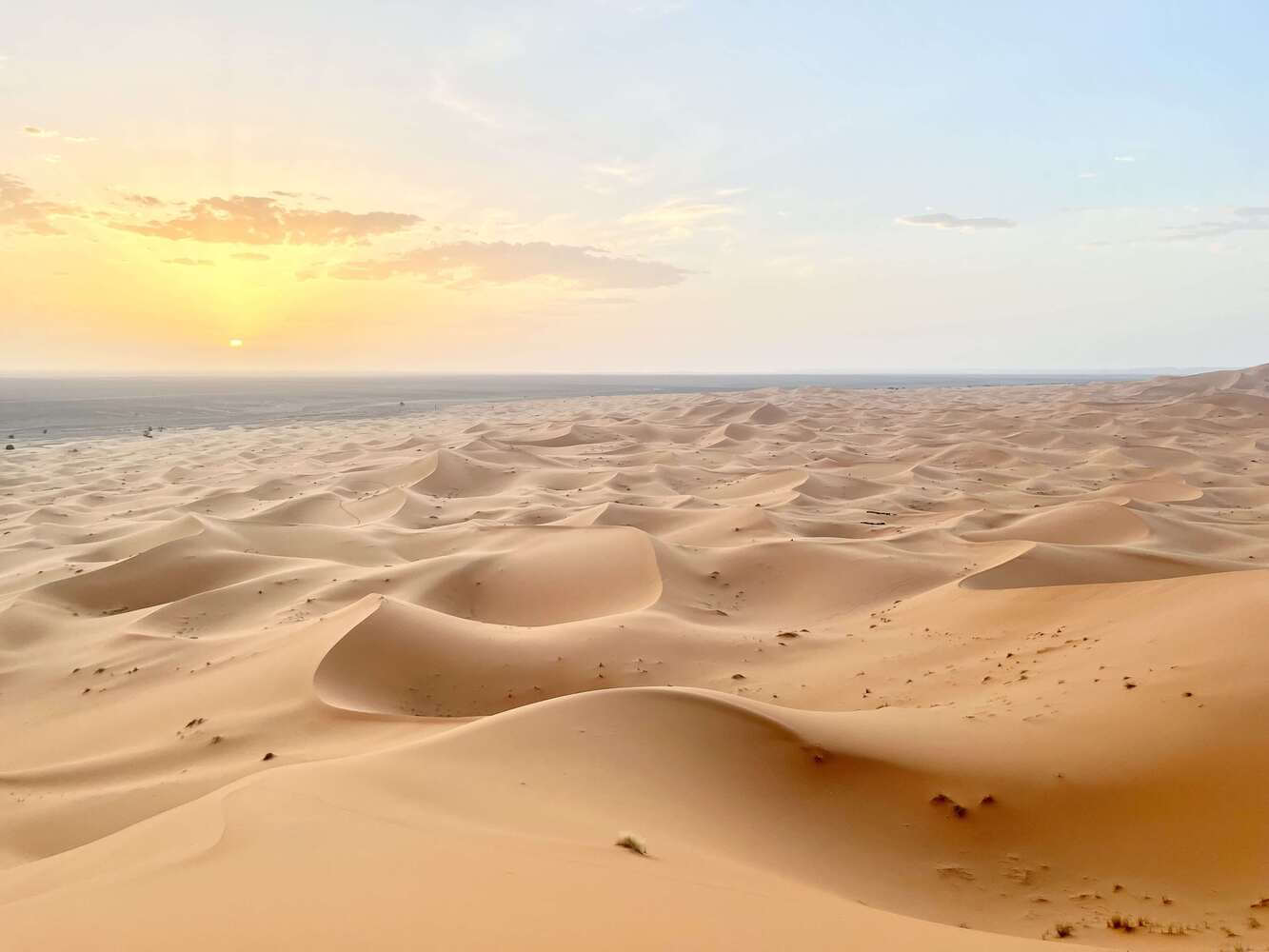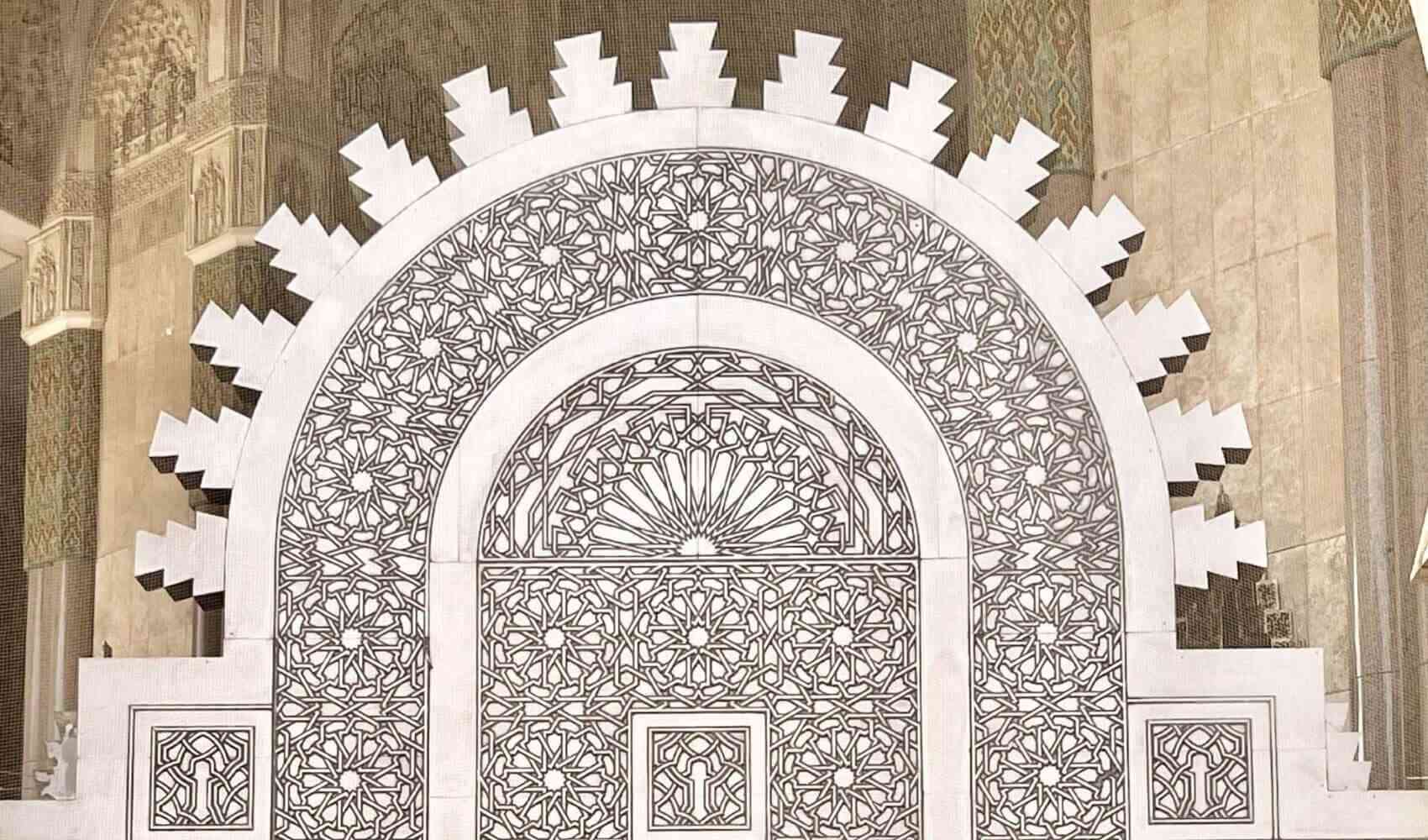
In June 2022, my college friend Allen Liu and I visited Morocco. We spent a week here, using Marrakech as a base to travel to the legendary Atlas Mountains and to the Sahara Desert. We ended in Casablanca. I discovered two undeniable truths about Morocco. First, anything is possible. If you are a tourist, your guides will find a way to allow you to do whatever you ask. We secured lodging, found a guide to climb Morocco’s tallest mountain, and bought all our provisions less than 12 hours before we started hiking. Second, nothing is possible quickly. Our guide recommended we start the hike at 3am to avoid bad weather, but he did not wake up until 3h30, and then insisted we take 45 minutes to eat a nice lavish meal of couscous before we set out. I have never felt such heart-warming frustration.
Casablanca and Marrakech are among two of Morocco’s five largest cities, but they could not be more different. Casablanca is the country’s financial and business center. Large modern skyscrapers are only a short walk from the winding narrow streets of the city’s historic district (called a medina). You could spend hundreds of euros on luxury brands in the Morocco Mall (Africa’s largest), or buy a full meal of street food for less than a euro (though this may have been the cause of the digestive misery I experienced on my flight back home). Marrakech is the ultimate tourist trap – a historic town that has been repurposed for the sole objective of attracting foreigners and separating them from their money. Street vendors filled every street and passageway, selling anything and everything that might entice tourists. The pushiness and haggling of vendors in Morroco can be overwhelming, but in a one-on-one interaction Moroccans are some of the most welcoming people I have encountered. Our hosts at the riad (guesthouse) we stayed at were extremely generous, and perpetually offered us delicious Berber tea.
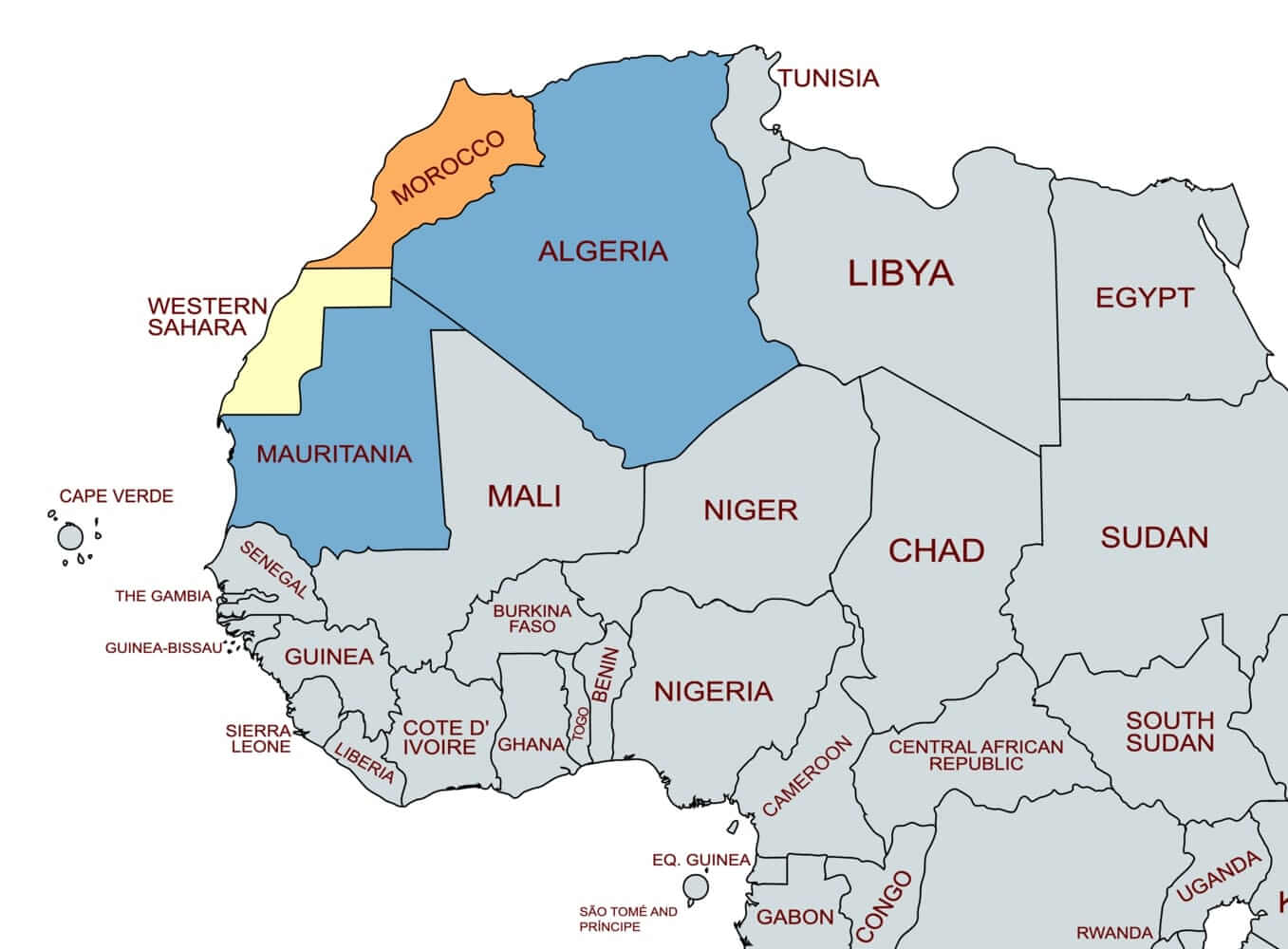
Morocco was incorporated into the Arab Umayyad Caliphate in the 7th century. Although the local Berber population converted to Islam, they retained many traditions and customs. The country was ruled by the Saadi Sultanate from 1510 until 1668, at which point the Alawite dynasty took power. The current Moroccan royal family are Alawites. In 1777, Morocco was the first country to recognize American independence, and the Moroccan American Treaty of Friendship remains the U.S.’s longest standing such treaty. In 1912, France and Spain established protectorates over the region, with Spain controlling small strips on the north and south, and France controlling the rest of the country. Morocco gained its independence from these colonial powers in 1957, though Spain still controls the cities of Ceuta and Mellila (which Morocco contests).
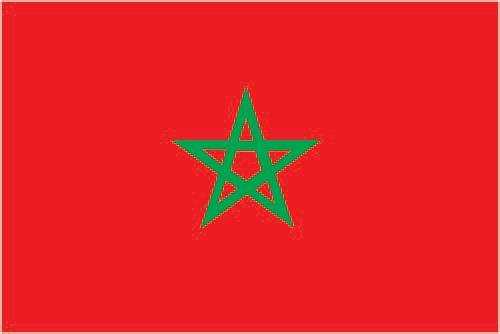
Along with Lesotho and Eswatini, Morocco is one of the only remaining monarchies in Africa. Its current King Mohammed VI has been head of state since 1999, and his business investments have resulted in his becoming one of the wealthiest monarchs in the world. Unlike Tunisia, the Arab Spring in 2011 did not result in a change of administration; instead, the existing government enacted several reforms, including constraining the king’s powers, making the Berber language co-official alongside Arabic, and increasing women’s legal rights. Morocco has an ongoing territorial dispute over the region of Western Sahara. Both it and the Sahrawi Arab Democratic Republic (backed by Algeria) claim it, though it is currently mostly controlled by Morocco. In 2020, Morocco established diplomatic relations with Israel in exchange for the U.S. recognizing its claim over Western Sahara.
This impressive mosque is the largest in Africa, and the 7th largest in the world. Its minaret is an impressive 210 meters high, and it towers above Casablanca’s shore. It was commissioned by Morocco’s King Hassan II in 1961 to honor his father King Mohammed V and was finished recently in 1993. They have specific hours during which non-Muslims can enter the building. Since I did not realize this and arrived during the non-tourist hours, I had to content myself with touring the mosque’s vast exterior.
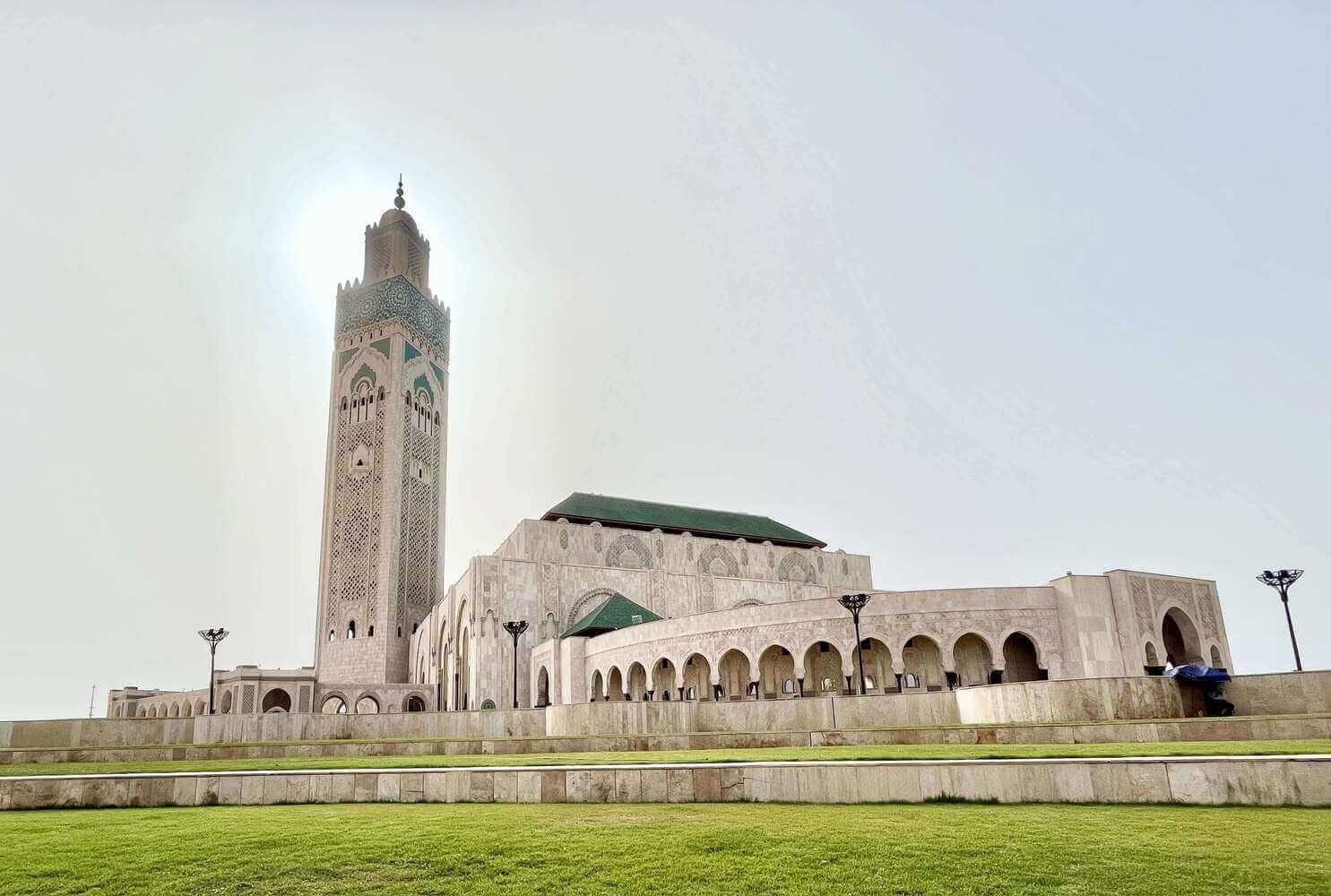
At 4,167m, Jebel Toubkhal is the tallest mountain in Morocco and in North Africa. Allen and I somewhat recklessly decided to climb it the day after we arrived. We took a taxi to Imlil, a town on the foot of the mountain. We went with a young and hardy guide named Yassine – having a guide has been mandatory since 2018, when two Scandinavian tourists were murdered on the trail. We left at 4am; the climb was strenuous but not technical. Toubkhal is an impressive peak that combines the high prominence of the Alps with the rocky and otherworldly landscape of the Rockies. Although we managed to make it to the summit, our bodies revolted against our foolhardy decision to climb it without properly acclimatizing, and my friend and I were both bedridden the next day.
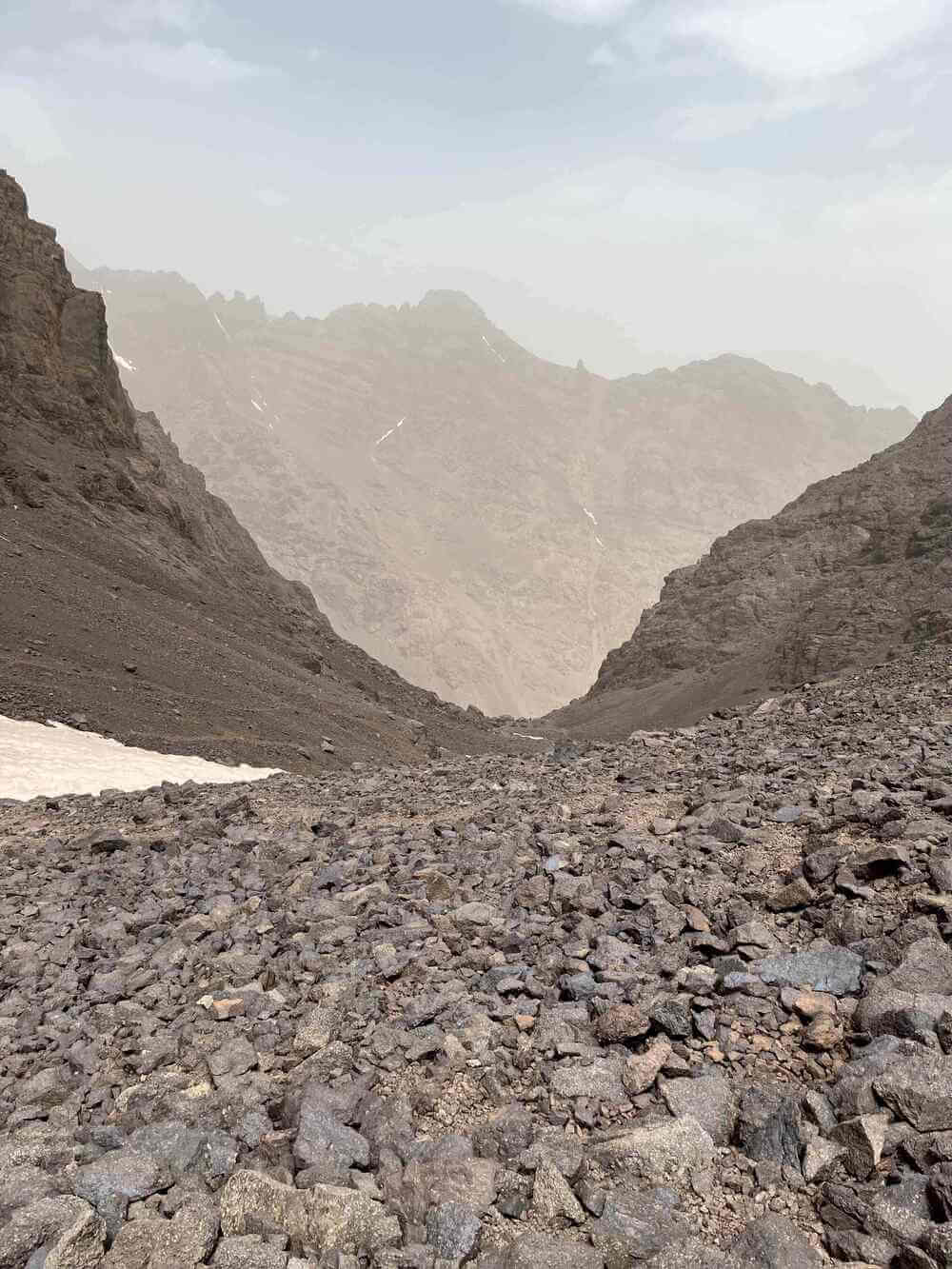
We went on a three-day trip to the Sahara Desert. Our tour group went on a 9-hour van ride from Marrakech to Merzouga, a small town with only a few hundred residents town near the Algerian border. We camped on the sand dunes a short camel ride outside the town. Struggling up one of the tallest dunes allowed us to watch the sunset. At night, there were so many stars I had trouble making out the constellations I knew. I was elated to be in the desert but was appalled to see one young camel with a rope tied through its nostrils like a nose ring. This forced it to follow the pack. Its nose was quite bloody, and I could only imagine how painful that must have been. The guides told me this is how they are trained. On our return, some of my fellow tourists and I opted to walk instead of ride as a small (albeit inconsequential) protest against this treatment of animals.
